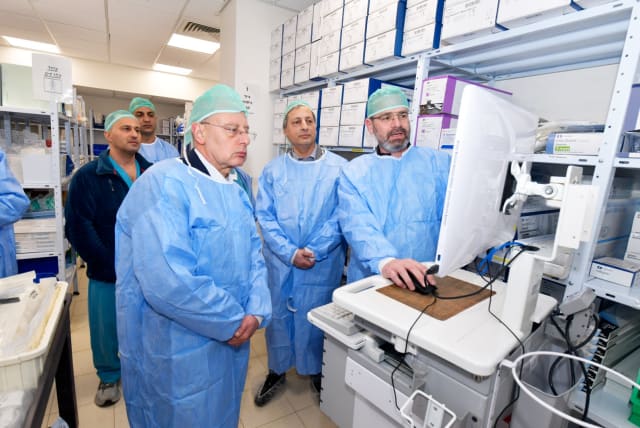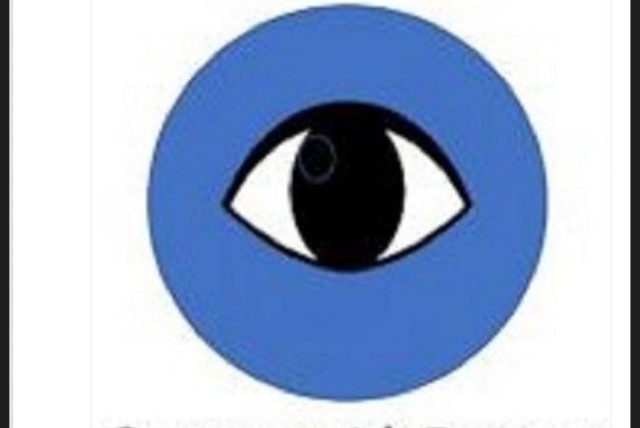‘Eye’ signage placed in operating rooms increases civility among staff

Several unsuccessful interventions have been tried around the world to eliminate poor behavior among surgical teams, including workshops and training sessions; however, the 'eye' signage works.
Any surgery is a traumatic experience, but fear that surgeons will make offensive comments about you in the operating room while under anesthesia is just as worrisome.
Australian researchers have conducted a successful experiment to prevent rude comments in operating theatres by placing “eye” signage in operating rooms. The eye images, without any accompanying explanation, that were attached to the walls of an operating room in an orthopedic hospital in Adelaide markedly reduced poor behavior among surgical teams.
Lead researcher Prof. Cheri Ostroff attributed the result to a perception of being “watched” – even though the eyes were not real.
The eye makes surgery teams feel they are observed
Their study was published in the journal PLOS ONE under the title “Eyes on incivility in surgical teams: teamwork, wellbeing, and an intervention.”
The three-month experiment was undertaken to address a widespread culture of bullying and poor behavior in the surgical room. So-called “incivility” – rudeness, derision, insulting remarks, and humiliation- is prevalent in many industries, including the healthcare sector, particularly in high-stress and high-pressure environments like operating rooms.
Ostroff noted that such remarks don’t just affect staff morale, well-being, and productivity; they can also have a negative impact on patients. “Teamwork is critical during surgery. When incivility contributes to poor communication in the operating rooms, worse outcomes can result,” Ostroff declared. The consequences are far-reaching, leading to high staff turnover, low job satisfaction, a drop in productivity, and less compliance with infection control and medication protocols.
Several interventions have been tried around the world – but with limited success – to eliminate poor behavior among surgical teams, including workshops and training sessions.
In the Adelaide study, an initial survey was sent out to 74 staffers including surgeons, trainees, nurses, anesthetists, and technicians – at a private hospital. They were asked to report incidents of bad behavior in the operating theater.
A month later, the eye signs were placed. Seven weeks later, a follow-up survey was undertaken. The impact was marked. The nurses, in particular, reported a marked drop in experiencing offensive and rude remarks.
Dr. Nicholas Wallwork, a surgeon who took part in the study, said the experiment shows that if people perceive they are being watched, they will change their behavior, even subconsciously.
“Rudeness and bullying occur in operating theatres because the stakes are high,” he said. “There are at least six people working as a team in a confined space, under time pressures and with risks involved. A high-functioning stable team delivers better performance, but due to numerous factors, this is sometimes difficult to achieve.”
“Poor communication is a recognized problem in our industry, and it is not always from the top down but across teams. The selection and training process is arduous – it takes ten years to qualify as a surgeon – and it is a very competitive, intensive, and results-driven environment.
Complex leadership structures, where surgeons have direct clinical control of the staff during a shift but are not line managers outside the operating theatre, lead to conflict, Wallwork added. “Unless we change this structure, which is leading to high burnout and frequent staff turnover, we will face a crisis in the industry.”
Jerusalem Post Store
`; document.getElementById("linkPremium").innerHTML = cont; var divWithLink = document.getElementById("premium-link"); if (divWithLink !== null && divWithLink !== 'undefined') { divWithLink.style.border = "solid 1px #cb0f3e"; divWithLink.style.textAlign = "center"; divWithLink.style.marginBottom = "15px"; divWithLink.style.marginTop = "15px"; divWithLink.style.width = "100%"; divWithLink.style.backgroundColor = "#122952"; divWithLink.style.color = "#ffffff"; divWithLink.style.lineHeight = "1.5"; } } (function (v, i) { });

